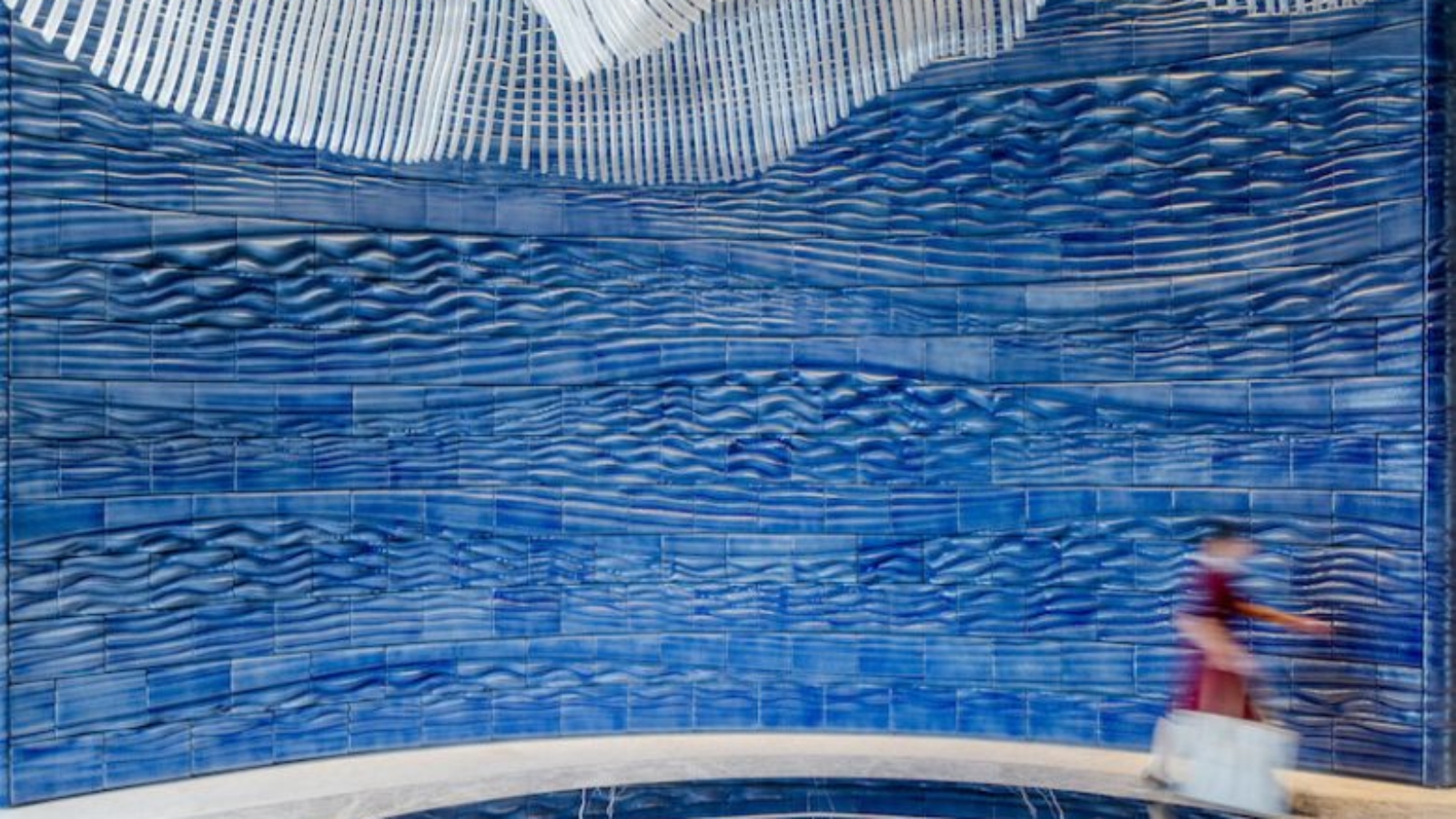Dutch architectural design company Studio RAP is becoming a prolific creator of iconic 3D printed spaces and building features. Based out of Rotterdam, the studio combines computational design and digital fabrication (i.e. robotic3D printing) in order to transform built space—often with a nod to the traditional. Its recent projects include an algorithmically designed, 3D printed storefront in central Amsterdam, and a series of 3D printed ceramic tiles, inspired by traditional Delft ceramics, that can be used in the construction of aesthetic cladding walls. The company’s newest endeavour, a project called Blue Voyage, might just be its most impressive yet.
For Blue Voyage, Studio RAP has 3D printed two massive-scale ceramic walls, which now form the entryway to the Jumeirah Marsa Al Arab Hotel in Dubai. The walls, which each span six meters in height and nine meters in length, make for an awe-inspiring experience as one enters into the hotel, one that evokes the movement and fluidity of the Persian Gulf that the hotel looks onto.
Manufacturing on Demand

This undulating, rippled effect was achieved using a combination of computational design, robotic 3D printing, clay materials and ceramic glazing. Specifically, Studio RAP parametrically designed in the range of 900 unique ceramic tiles, which were then reproduced using 3D printing at its Rotterdam facility. The architectural design studio works with its own 3D printer hardware, an extrusion clay printer mounted on a Kuka robotic arm, as well as digital design algorithms developed in-house. Each printed tile also integrates features for a seamless assembly, resulting in a continuous, rippling surface. At the hotel, the large-scale ceramic walls have been positioned to create a pathway in the main lobby entrance, creating a tactile and one-of-a-kind ‘Blue Voyage’ for those walking through.
3D printing, especially large-scale concrete and ceramic 3D printing, has been growing in popularity in the architectural sphere, as it allows for designers to explore new geometries and concepts in a way that traditional methods could not. From unconventional and efficient homes, to ecological marine installations, to innovative flooring and wall claddings, there is huge potential for 3D printing in architecture.

You might also like:
EAD partners with Archireef to 3D print marine ecosystems: The MoU establishes a framework for cooperation between EAD and Archireef in the restoration and rehabilitation of coral reefs and coastal ecosystems using advanced eco-engineering solutions, including the development of artificial coral reef pieces designed from natural elements using 3D printed technology. The partnership seeks to strengthen the resilience of marine ecosystems, advance sustainable development, and contribute to the achievement of the United Nations Sustainable Development Goals (SDGs).
* This article is reprinted from 3D Printing Media Network. If you are involved in infringement, please contact us to delete it.
Author: Tess Boissonneault


Leave A Comment